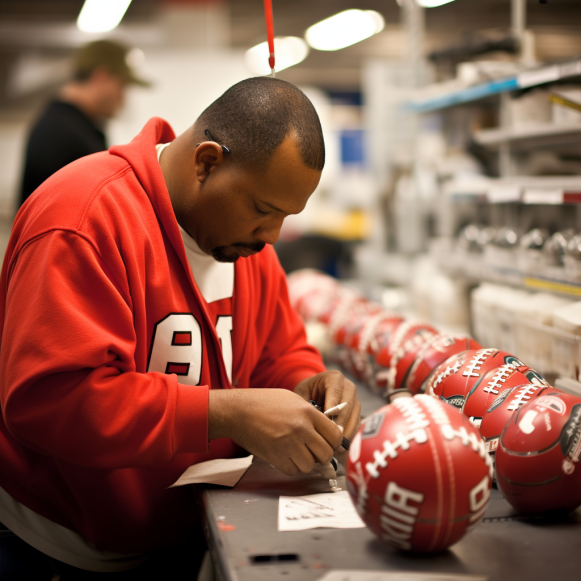The little town that builds NFL footballs — all 480,000 of them

In the 154 years since Princeton and Rutgers played the first official collegiate football game, the sport has grown into a billion-dollar industry that draws millions of fans each season. The game, however, would be a non-starter unless 150 people worked in a small Ohio factory.
Each year, the Wilson Sporting Goods factory in Ada, Ohio, produces approximately 700,000 footballs, including 480,000 for the NFL. All by hand.
Every football used in a professional or college football game is manufactured at the factory, which has been the sole supplier since 1955. The balls are cut, sewn, manipulated, and stitched by workers who define devotion to their craft, many of whom have worked at the factory for 40 years or more.
“Our employees are dedicated and hardworking, show a passion for sports, and are committed to upholding the excellence in craftsmanship that Wilson has become known for over its 100-plus year history,” says Sarah Houseknecht, a Wilson spokeswoman. “And strong fingers definitely help.”
The ball’s now-familiar shape wasn’t always like this. When Americans first began playing football, it was a cross between soccer and rugby, with a round ball made of pig bladder, hence the now-outdated nickname. The ball could be kicked, but never touched with hands and never thrown.
According to Wilson historians, changes in football rules led to the development of the passing game, which necessitated the use of a different-shaped ball. The first elliptical-shaped ball was introduced in 1897, refined in 1912, and has remained unchanged for the past 111 years.
In 1941, Wilson began producing official footballs for the league. The factory opened 14 years later in Ada, a town of 5,256 people, give or take a few, located about 69 miles southwest of Toledo.
Each football is made up of four panels of Chicago-tanned cowhide leather. The panels are cut to size before being imprinted with logos and emblems. All official game balls bear “The Duke” insignia, a nod to New York Giants owner Wellington Mara, who was named after the Duke of Wellington and given the nickname “The Duke” when he began working as a ball boy for the team in 1925. Wilson began naming its balls “The Duke” after being awarded the league contract.
Many employees are football fans, whether they support a pro team, a college team, or the local Ada Bulldogs high school team, according to Houseknecht. They can’t identify their own hand in crafting a specific ball because the footballs are all identical, but they recognize their collective contributions.
Since 1969, the factory has produced all Super Bowl footballs, with approximately 100 balls produced for each game. Workers wait until the final championship game is decided before stamping the two winning teams into the leather and starting work.




